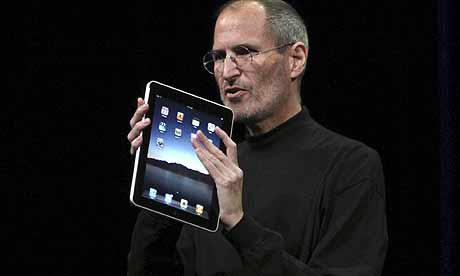What Comes Next: The Pad, The Cloud, and The Software that links it all
 Wednesday, April 7, 2010 at 4:19PM
Wednesday, April 7, 2010 at 4:19PM 
Part 1: The Pad
The pad has to come first. With all the frenzy about Apple's recently released iPad, it's easy to miss the main point here, and the principal means by which the iPad is an innovation: Everyone who uses a "computer" already has one! The world of computing that Apple defined and Microsoft conquered 35 years ago really hasn't changed since -- the machines have gotten more powerful, but the basic means of human interaction with them hasn't changed. It hasn't changed since Douglas Engelbart's invention of the computer mouse, and it really hasn't changed since Ivan Sutherland's PhD thesis Sketchpad (both 1963).
Alan Kay had the right idea with his Dynabook, and he may have been the first to realize the need for changes in both the interaction model and the programming model for computers. Programmers of that earlier era he referred to as
High priests of the low cult
That terminology could have been used to describe most computer users through the ages; but the "Pad Computer" can change that. The applications are there at the touch of a finger. Hand gestures (not code) are what the user uses to interact with the machine. It has been said that you "don't interact with the applications, you live in them."

This really is Alan Kay's Dynabook made real. Kay's own estimation of such a device, made years ago, put it all in perspective:
“When the Mac first came out, Newsweek asked me what I [thought] of it. I said: Well, it’s the first personal computer worth criticizing. So at the end of the presentation, Steve came up to me and said: Is the iPhone worth criticizing? And I said: Make the screen five inches by eight inches, and you’ll rule the world.”
The iPad and similar devices may not be the full Dynabook yet, but you can see it from there.
 John Repko | Comments Off |
John Repko | Comments Off | 
